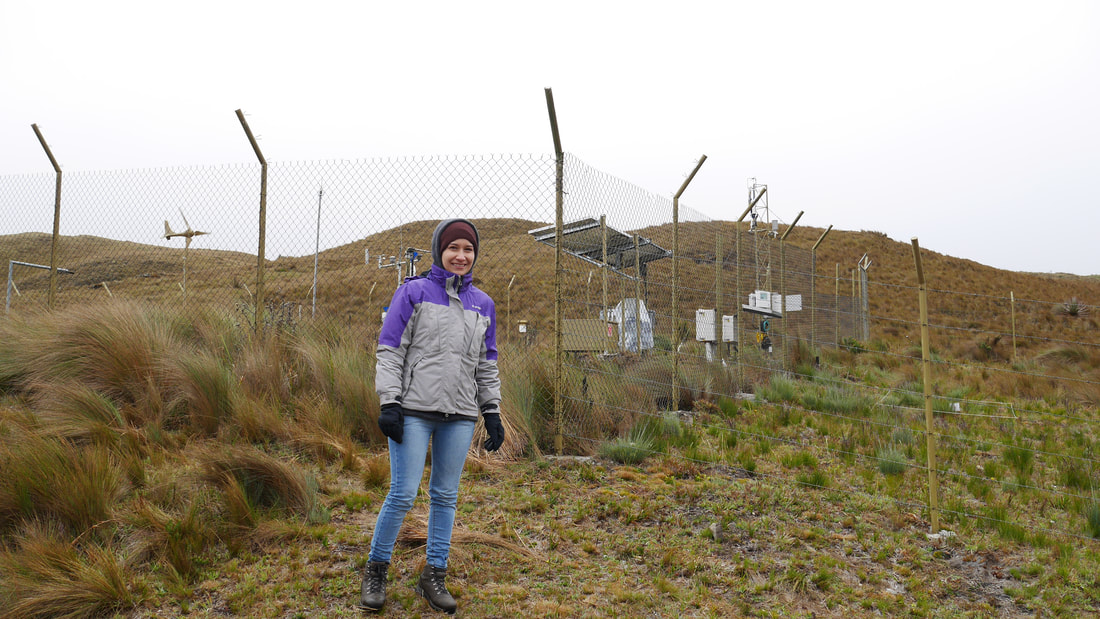Ecohydrology is understanding the functioning of the ecosystem through analysing the interactions of physical and biological processes (e.g. climate, vegetation and soil). I think ecohydrology is key to fully comprehend our ecosystems by taking into account biotic and abiotic factors. During the last years, I have been working in understanding evapotranspiration dynamics and components in the high Andean grasslands; and therefore, for me, ecohydrology means unravelling ecosystems functioning with a later purpose of understanding climate and land use change impacts, and propose how to improve management.
What are your undergraduate and graduate degrees in?
I graduated from Civil Engineering at University of Cuenca in Ecuador. Then, I travelled to Belgium and followed a Master in the Interuniversity Programme in Water Resources Engineering between the KU Leuven and VUB. Last year, I obtained my PhD in Water Resources from the Interuniversity Programme between University of Cuenca, National Polytechnic School, and Technical Particular University of Loja in Ecuador.
How did you arrive at working in/thinking about ecohydrology?
I have worked in different research projects about water quality, climatology, hydraulic modelling and ecohydrology. I got to see a bit about different topics. When I was working with climate models in the high Andean catchments, our models were performing poorly. In order to improve them, I thought we needed to increase knowledge about local climate processes for sure, but also about our understanding of the complete system. At that time, a PhD position opened in ecohydrology where I found the opportunity to pursue a topic that became so interesting and fulfilling for me.
What do you see as an important emerging area of ecohydrology?
For poorly monitored sites, I think the comprehensive understanding of ecosystems is vital. Looking at the interactions between water, vegetation and soil needs intensive monitoring but it is worth it. After reaching that point, I think implementing models that are more precise in representing biotic and abiotic factors will help to answer, more effectively, questions about climate and land use changes. This will be especially important to advance in adaptation strategies and better water management decisions.
Do you have a favorite ecohydrology paper? Describe/explain.
I am a fan of some authors that awoke my interest in ecohydrology. For example, Prof. Bruijnzeel, widely known as Sampurno, who has a vast work in the functioning of tropical forests, I especially like his papers on interception. I like the work of Prof. Heidi Asbjornsen, Prof. Jeffrey Mcdonell and Prof. Bradford Wilcox. Of course, the valuable work of Prof. Ignacio Rodriguez-Iturbe in ecohydrology is outstanding. I will peak then a paper of his, that made me understand what ecohydrology means: “Ecohydrology: A hydrologic perspective of climate-soil-vegetation dynamics”. It is not a research article but a vision for the future, written in 2000, that has lead the path of ecohydrology. He wrote about the space-time links between climate, soil, and vegetation. He stated “the necessity to gain a predictive understanding based on solid and quantitative scientific grounds of the responses of different biomes to a changing global environment”. Finally, he encouraged young researchers to be interested in understanding nature and pursuing their own dreams.
What do you do for fun (apart from ecohydrology)?
I love walking in nature with my family. We live near the Cajas National Park, where we usually go for fishing and for beautiful mountain sightseeing. I also enjoy astronomy readings and listening to music.

 RSS Feed
RSS Feed